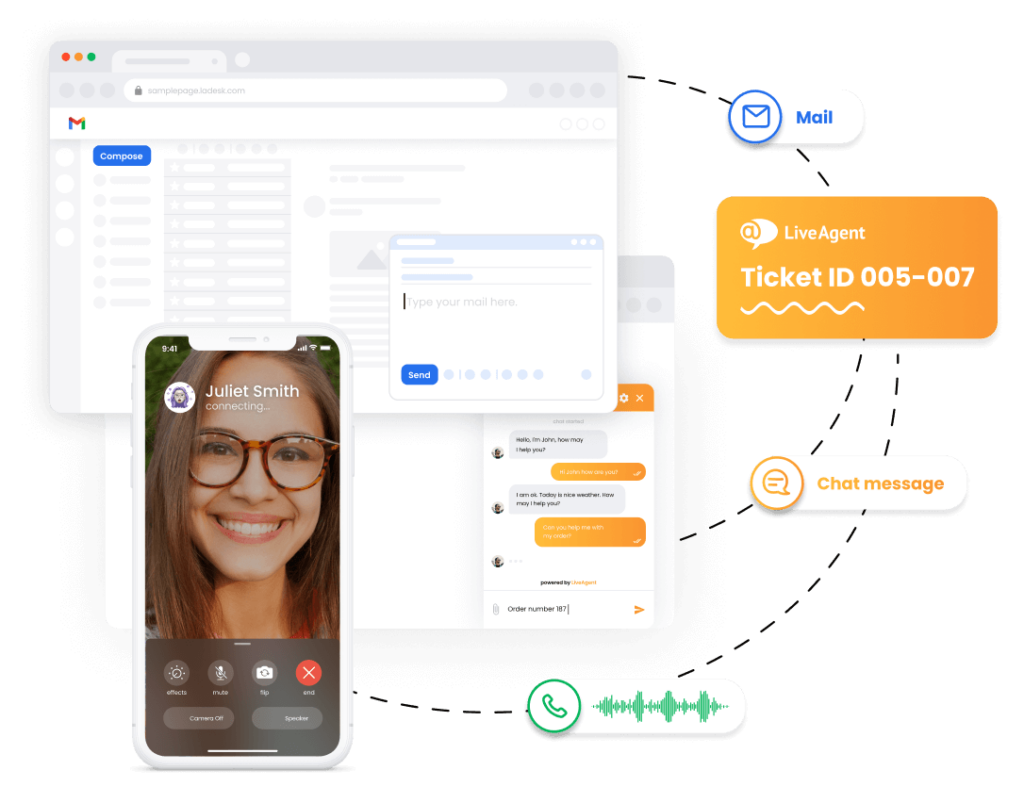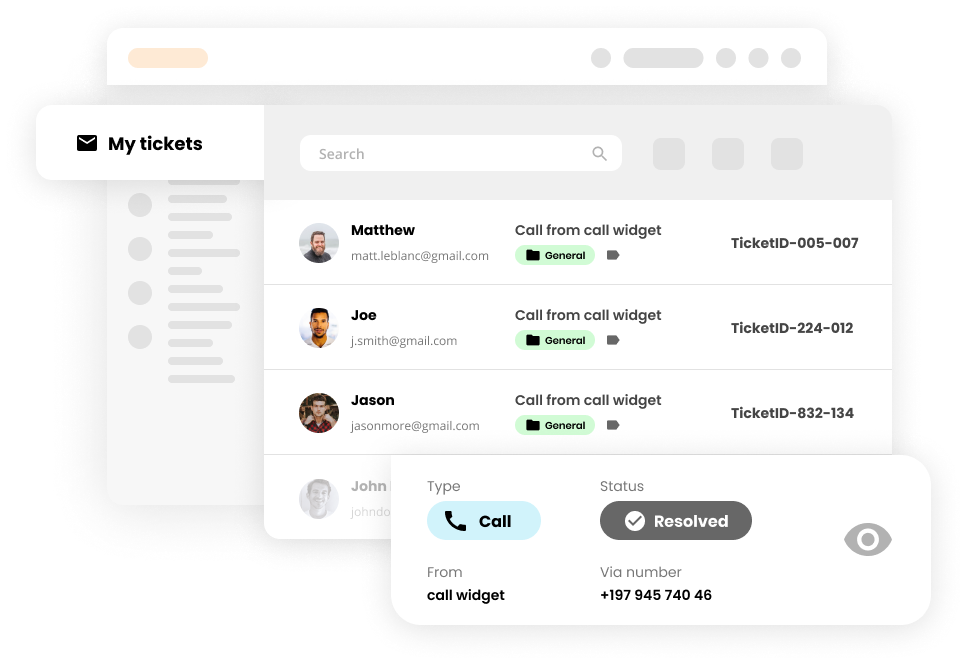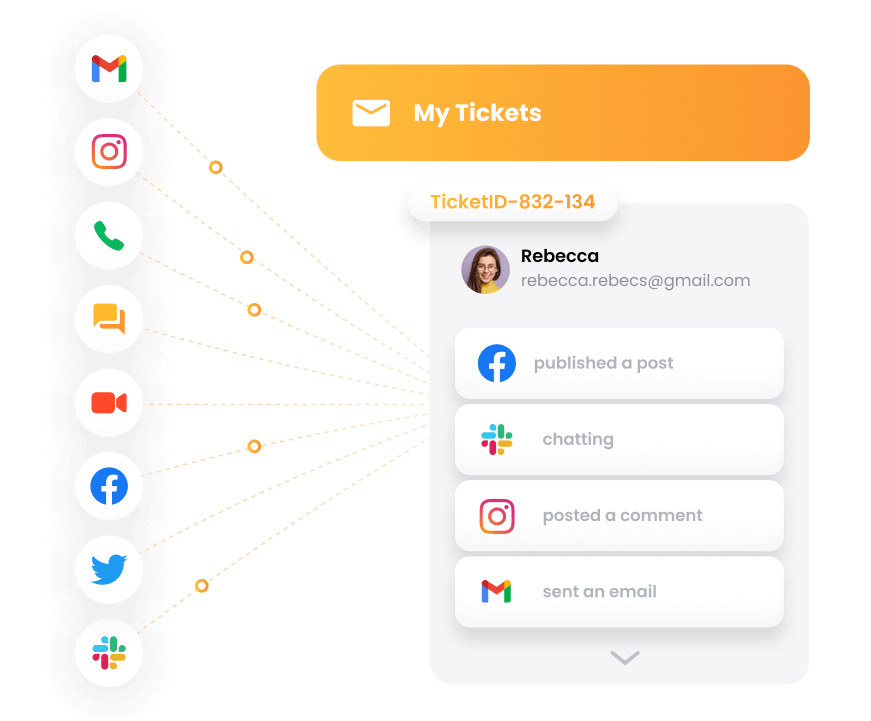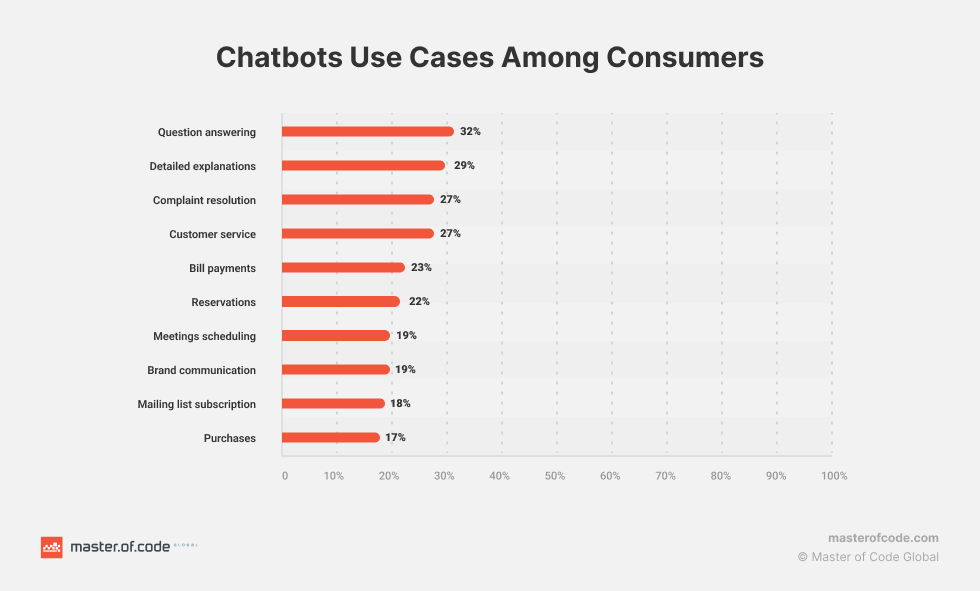Table of Contents
What is a contact center?
A contact center is a centralized office used to send and receive a large volume of requests. A contact center might deal with customer contacts including email, chat, social media, and more. The main purpose of a contact center is to ensure customer service, technical support, telemarketing, and sales for companies.
It’s important to note that a contact center is different from contact center software. Contact center software is a technology tool that enables high-quality communication between a business and its customers. This type of software often includes features catering to multichannel communications like voice, video, email, messaging applications, social media, and more.
If you are interested in this software, you can get more information at contact center software.
Contact center vs. call center: Main differences
If you spend some time online trying to research the contact centers, you may encounter a plethora of terms that seem to bear the same meaning. However, this is rarely the case. Let’s clear up the main differences between contact centers vs. call centers, as well as some other often-used labels.

| Aspect | Contact center | Call center |
|---|---|---|
| Communication channels | Uses various channels such as phone, email, SMS, and social media. | Primarily uses the phone as a channel of communication. |
| Customer interaction | Handles inbound and outbound customer interactions. | Handles both inbound and outbound phone calls. |
| Customer service and support | Provides customer service, sales support, technical support, and other various services. | Typically limited to customer service and telemarketing. |
| Technology | Utilizes advanced technology and systems to manage customer interactions across different channels. | Primarily uses telephony infrastructure. |
| Personalization | High. Can use data from past interactions to personalize the customer experience. | Low. Communication is generally one-way and doesn’t often utilize past data for personalization. |
| Efficiency and productivity | High. Interactions can be managed across different channels simultaneously, improving customer service. | Moderate. Efficiency is limited by the number of calls that can be handled at a time. |
Here are some other terms often used to refer to contact centers.
- Contact Center as a Service (CCaaS): This is a cloud-based customer experience solution that allows companies to utilize a contact center provider’s software. This model delivers flexibility as enterprises can pay for only the technology they use, and increases scalability with the ability to adjust services according to seasonal fluctuations or business growth.
- Contact center software: This can be either an on-premise or cloud-based solution that streamlines customer communications and engagement across different channels such as voice, video, social media, web, mobile, etc. This software typically integrates with customer relationship management (CRM) tools and uses analytics to track and improve customer interactions.
- Omnichannel contact center: This type of contact center aims to provide a seamless experience across all communication and digital channels. It ensures that the conversation context and the customer’s information are maintained across the different channels, thus improving the customer service experience.
- Virtual contact center: In this type of contact center, the representatives are geographically dispersed rather than situated in a centralized office location. They could work from home or different office locations. All they need is a strong internet connection, and they can be linked through a cloud-based contact center solution.
5 main benefits of contact center
Now that we have established the proper terms let’s take a look at the 5 benefits running a successful contact center can bring to your business.
1. Enhanced communication
Contact centers offer better communication pathways by enabling continuous service for customers. They deliver services across numerous digital channels, enhancing the communication process, and helping businesses deliver high-quality customer service.
2. Streamlined workflow
Contact centers allow all customer communication to be centralized into a single unit. For example, LiveAgent’s automations and multichannel capabilities aid in managing contacts efficiently, streamlining interactions, reducing response time, and hence, improving customer satisfaction levels.
3. Disaster recovery
In the event of a disaster or an unforeseen circumstance, a contact center can easily manage large volumes of requests or inquiries without experiencing downtime or service disruption. This ensures business continuity and assures customers of uninterrupted service.
4. Agent training and growth
Contact centers often incorporate modern technologies for agent training. Furthermore, the hands-on approach often implemented in contact center agent training can accelerate the learning process, and improve agent skills, enhancing the overall quality of customer service.
5. Retention and loyalty
By providing a seamless, efficient, and personalized service, contact centers significantly increase customer satisfaction levels, leading to a higher rate of customer retention. In addition, it helps build a loyal customer base, supports customer advocacy, and increases overall brand reputation.
Types of contact centers
Contact centers come in various shapes and sizes. Here are some of the most common types of contact centers.
Cloud contact center
A cloud contact center uses cloud-based technology to handle customer interactions and queries. Rather than having a physical location, the contact center is hosted on internet servers.
For example, a company like Amazon may use a cloud contact center to handle customer inquiries, orders, and complaints.
On-premise contact center
An on-premise contact center is a traditional mode where all the customer service hardware and software are physically located within the company’s premises.
Though it may seem outdated compared to the flexibility of cloud solutions, many large companies prefer this model for reasons like data security or compliance with stringent regulations. In an on-premise model, the company has total control over the entire system, as opposed to relying on a third-party provider.
An example could be a customer service department in a bank where all phone calls and emails are handled in-house.
Inbound contact center
An inbound contact center mainly handles incoming communication from customers, such as calls, emails, live chats, or social media messages.

This is generally used by companies that receive a high number of customer queries, support requests, or product inquiries, like an airline company that resolves queries about its flights.
Outbound contact center
An outbound contact center initiates interaction with customers or prospects via calls, text messages, or emails. They’re typically used for sales purposes, telemarketing, market research, or collecting feedback.
For example, a market research firm might use an outbound contact center to conduct surveys.
Multichannel contact center
This type of contact center uses a customer service model where interactions with customers occur on various communication channels that operate independently—such as phone, email, social media, live chat, SMS, etc.
For example, a retail company might offer support through phone, email, and social media, with different teams handling each channel.
Omnichannel contact center
An omnichannel contact center incorporates all communication channels, but unlike a multichannel contact center, it integrates these channels, allowing a seamless transition between them.

For instance, a telecom company could have a system where a customer’s chat conversation is forwarded to the phone support team when they decide to call, ensuring continuity in support.
LiveAgent is a perfect example of an omnichannel contact center. Its software allows companies to manage a variety of customer interaction channels in a unified interface, providing complete information needed to deliver a seamless customer experience. This means customer interactions across various channels can be traced and interlinked, preventing the customer from having to repeat the same information to different agents.
Contact center metrics and KPIs to track and measure
Key performance indicators (KPIs) and metrics are essential tools utilized for monitoring and assessing the efficiency and effectiveness of a contact center’s operations. Some commonly used KPIs and metrics include:
- First call resolution (FCR): FCR tracks the percentage of calls resolved during the customer’s first contact, measuring the efficiency of the center’s agents.
- Average handle time (AHT): AHT represents the average time an agent takes to handle a contact. This includes the tasks proceeding after customer interactions, like filling in customer information or wrapping up necessary documentation.
- Agent occupancy: Measures the time that an agent spends on live calls as well as on hold or completing post-call work.
- Service level: Measures the percentage of calls answered within a certain period. This is typically expressed as a pair of numbers, such as “80/20”, indicating that 80% of calls are answered within 20 seconds.
- Customer satisfaction score (CSAT): CSAT directly measures how satisfied customers are with the service they receive.
By continually tracking and analyzing these KPIs and metrics, you can isolate any inefficiencies or operational issues in your contact center. Regular analysis also helps highlight the success of any previously implemented changes or initiatives, enabling your contact center to evolve and meet its performance targets continuously.
For example, if a contact center notices its AHT is increasing, this may indicate that its agents are spending too much time on calls — perhaps due to a lack of training or over-complicated systems/processes. Based on this data, the contact center can implement targeted training programs or system simplifications to reduce AHT and improve operational efficiency.
The future trends and innovations in contact center technology
Let’s look at what the future holds for contact centers and how recent events shape the customer service landscape.
The rise of chatbots in contact centers
Badly programmed chatbots are no longer at the forefront of customers’ minds. Modern consumers appear to be embracing the integration of chatbots in contact centers. Around 47% are open to buying via bot interactions. This inclination is particularly strong amongst Gen Z, with 71% actively seeking products using bots.
You can utilize chatbots to enhance efficiency, availability, and speed of service, transforming customer experience in the process.

The importance of implementing artificial intelligence (AI)
In recent years, AI has been taking over all aspects of the digital world. In fact, Gartner‘s research forecasts a notable shift towards automation, stating that an estimated 10% of contact center agent interactions will be automated by 2026 using AI— a significant increase from the current 1.6% of automated interactions.
Improvements in AI, machine learning, and natural language processing enhancements are playing a pivotal role in this change. These innovations will pave the way for more sophisticated, efficient, and productive operations, reshaping the customer engagement sector, and providing an enhanced customer experience.
Future remote work in contact centers
Since the COVID-19 pandemic, more and more businesses are adopting remote or hybrid work models. This is especially prevalent when it comes to contact centers.
Research from the Cisco Global Hybrid Work Study indicates a strong preference for hybrid work models in the future. An impressive 71.2% of individuals express a desire for a blend of remote and office work, while 20.2% prefer a completely remote work life, and only a minority of 8.6% wish to return to the office full-time.

These findings hint at the emerging trend of contact center agents operating from their homes, which offers flexibility and convenience. This adjustment could significantly redesign the contact center landscape, catering to employee preferences while not compromising work efficiency.
Conclusion
It cannot be overemphasized how crucial contact centers are to customer service excellence. As the hub of customer communications across multiple channels, a contact center improves customer communication, streamlines workflows, and is an essential tool for business continuity. Whether it’s a traditional on-premise model or a cloud-based solution, contact centers offer efficient and effective ways to engage customers and build loyalty.
With emerging technologies like AI and chatbots, the future of customer service looks bright. As we adapt to new ways of working, contact centers are evolving, and remote work or hybrid models are becoming increasingly commonplace.
The journey to establish a highly effective contact center may seem daunting, but it doesn’t have to be. LiveAgent offers a powerful and robust software solution that makes setting up and running your contact center a simple and straightforward process. From handling customer interactions across different channels to offering key metrics to assess performance, LiveAgent provides all the tools necessary to drive your business’s customer service strategy. To experience the benefits, start your 30-day free trial today.
Ready to streamline your customer communications?
Try LiveAgent's contact center software today and experience the transformation yourself!
Frequently Asked Questions
Who uses the contact center?
Contact centers are used by businesses and organizations to manage their communication with customers. Customers also use contact centers when they need to inquire about a product or service, lodge a complaint, or seek assistance.
What is a contact center agent?
A contact center agent is an individual who handles interactions with customers on behalf of a company. This role may involve answering inquiries, solving problems, or providing information about products or services. The agent could communicate through various channels including phone calls, emails, live chats, or social media.
Which skills are important for contact center agents?
Effective communication skills are crucial for contact center agents as they need to clearly articulate solutions to customers and understand their concerns. They also require problem-solving skills to address customer issues effectively and quickly. Furthermore, empathy and patience are essential as they often deal with frustrated or upset customers.
What are some common challenges faced by contact centers?
Some common challenges contact centers face include difficulty in maintaining high-quality customer service due to high staff turnover, managing large volumes of customer inquiries simultaneously, and incorporating modern technology effectively to streamline operations and improve customer interaction.
How do contact centers adapt to changing customer preferences and technological advancements?
Contact centers leverage technology like artificial intelligence, machine learning, and data analytics to offer personalized customer experiences. They also transition to omnichannel support, which allows customers to communicate via their preferred method. Additionally, contact centers invest in training their staff on the latest technological innovations to ensure they can effectively use these new tools.
After exploring the intricacies of a contact center, you might be curious about the broader concept of customer service. Learn why it's crucial for businesses and understand the skills your team needs to excel in this field.
Call center compliance checklist
Ensure call center compliance with our checklist! Protect data, prevent breaches, and meet regulations with secure networks & encryption."
Understanding customer retention: Definition, importance, and strategies
Master customer retention with 13 proven strategies, key metrics, and real examples. Boost loyalty, profits, and brand reputation today!

 Български
Български  Čeština
Čeština  Dansk
Dansk  Deutsch
Deutsch  Eesti
Eesti  Español
Español  Français
Français  Ελληνικα
Ελληνικα  Hrvatski
Hrvatski  Italiano
Italiano  Latviešu
Latviešu  Lietuviškai
Lietuviškai  Magyar
Magyar  Nederlands
Nederlands  Norsk bokmål
Norsk bokmål  Polski
Polski  Română
Română  Русский
Русский  Slovenčina
Slovenčina  Slovenščina
Slovenščina  简体中文
简体中文  Tagalog
Tagalog  Tiếng Việt
Tiếng Việt  العربية
العربية  Português
Português 


